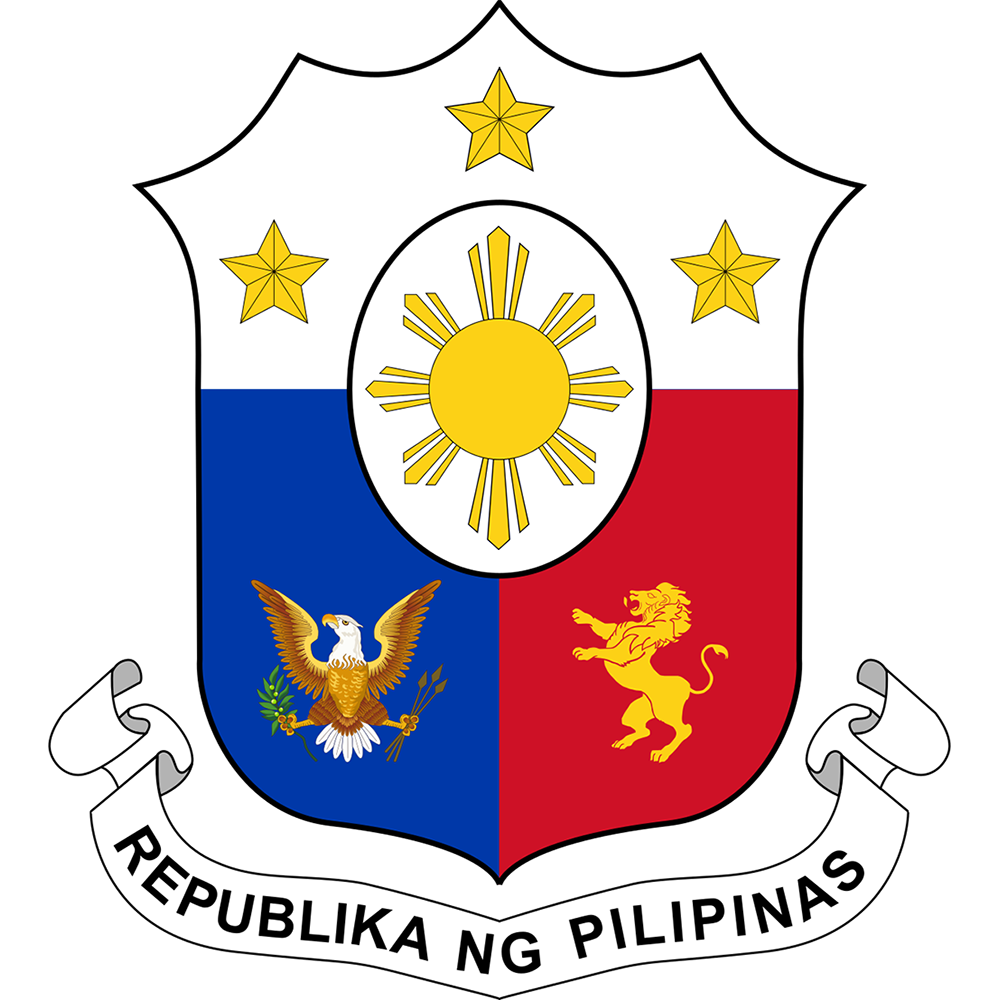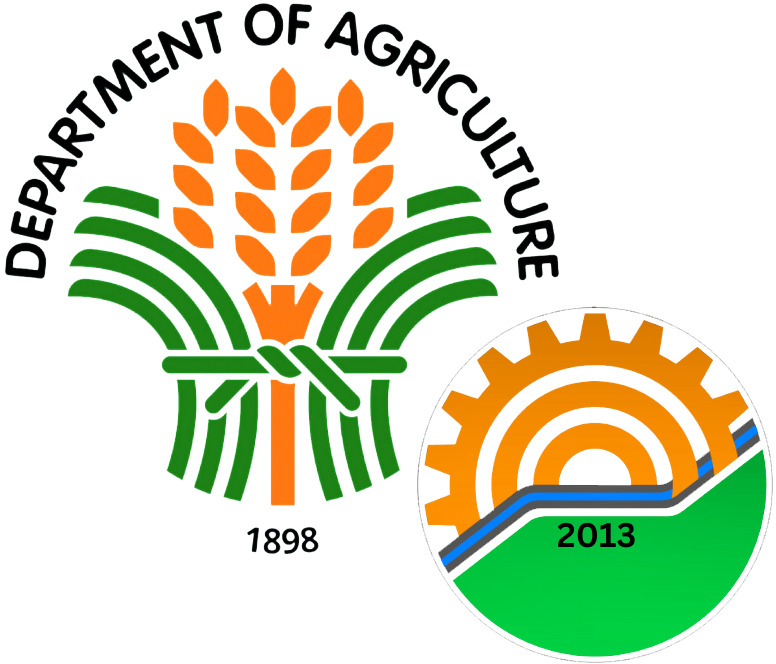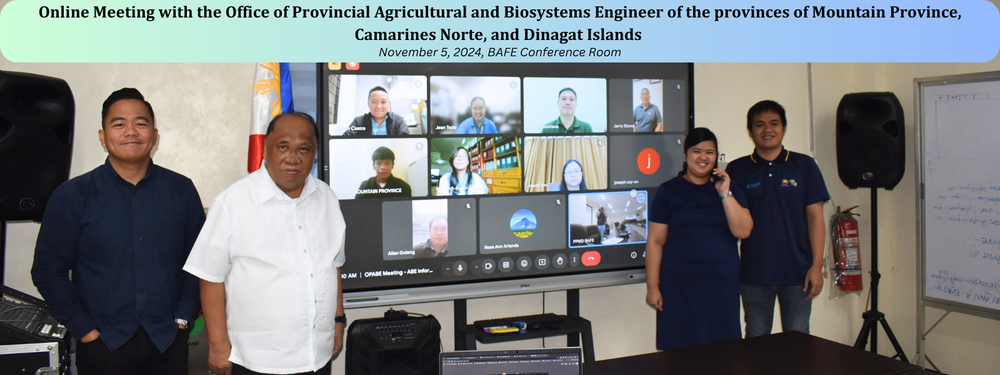

DEPARTMENT OF AGRICULTUREBUREAU OF AGRICULTURAL AND FISHERIES ENGINEERINGSugar Center, Annex II Building Extension, North Avenue, Diliman Quezon City




The provinces of Mountain Province, Camarines Norte, and Dinagat Islands are on their way towards transforming their local agriculture into a more resilient, sustainable engine for growth. Behind this vision stand the dedicated engineers and administrators at the Office of the Provincial Agricultural and Biosystems Engineer (OPABE), working to build a future where small farmers and fisherfolk thrive, water resources are safeguarded, and communities grow stronger through sustainable practices.
As 2025 approaches, the OPABEs are faced with both opportunities and hurdles, from limited machinery to understaffed departments. Yet, their determination to innovate, adapt, and implement strategic plans—like the Provincial Agriculture and Fisheries Mechanization Plan (AFMP) and the Farm-to-Market Road Network Plan (FMRNP)—underscores a broader commitment to agricultural sustainability.

At the core of these efforts is the Provincial Agricultural and Fisheries Mechanization Plan (PAFMP), a comprehensive framework aiming to address the province’s most urgent agricultural needs. The plan emphasizes not only increased food security but also sustainable agricultural practices that safeguard natural resources for future generations. Scheduled for a presentation in early 2025, the PAFMP outlines initiatives across key areas: machinery, irrigation, soil conservation, and transport infrastructure.
“Our target is to present this to the Provincial Board in the first quarter of 2025,” said Engr. Marlon Cueco, Provincial Agricultural and Biosystems Engineer (PABE) for Dinagat Islands, during a recent meeting. “This will allow us to adapt and seek funding for the proposed interventions incorporated in the plan.”
For communities throughout these provinces, the PAFMP serves as a roadmap toward a revitalized agricultural sector —one where projects like comprehensive irrigation systems and accessible farm-to-market roads play an important role in sustaining livelihoods. Stakeholders have already come together in consultations to ensure that the roadmap reflects local needs.
Water conservation and management are at the forefront of the sustainability strategy, as agricultural and biosystems engineers (ABEs) work to mitigate water scarcity and ensure efficient use of resources. From Dinagat’s small-scale diversion dams to Camarines Norte’s solar-powered irrigation systems, the provinces are investing in projects designed to enhance water security and agricultural resilience.
Despite these advancements, challenges remain. With funding gaps and limitations on available machinery, there are still obstacles in meeting all irrigation needs. “We have a lot to do,” admitted Engr. Cueco, echoing a sentiment familiar to many involved in the project. Yet with strategic support from the national government and partnerships with agencies like the National Irrigation Administration (NIA), these provinces are making a way forward.
In addition to water infrastructure, the push for mechanization represents a critical element of the OPABE’s sustainability vision. Farm machinery and post-harvest facilities are essential tools to improve productivity and reduce the labor burden on farmers, many of whom work without adequate equipment.
This emphasis on mechanization has already translated into concrete proposals, such as a PhP 5 million investment in rice machinery in Dinagat Islands, designed to streamline the agricultural process and alleviate labor constraints. However, the path to full mechanization remains bumpy, with budget constraints limiting the extent of available tools and resources. Funding discussions are ongoing, with provincial engineers advocating for increased financial support to meet the needs of local communities.
One of the most transformative goals set forth by the PAFMP is the development of an integrated Farm-to-Market Road Network, intended to improve connectivity between agricultural production sites and marketplaces. This road network promises to make the transportation of goods faster and more efficient, thereby boosting farmers’ incomes and reducing post-harvest losses.
The planning phase for the network has been meticulous, with stakeholders across the provinces engaging in mapping and site analysis to determine optimal routes. “We’re inviting the municipalities to upload their sites before the stakeholders’ consultation so that we can see the picture,” Engr. Cueco explained. This collaborative approach ensures that the road network will be tailored to actual community needs, benefiting small farmers and enhancing their access to markets.
While the plans and initiatives are in place, implementation hinges on addressing critical staffing and budgetary gaps. Each province’s agricultural office operates with a lean team, relying heavily on job orders and temporary staff. The lack of permanent personnel not only slows project execution but also creates an unstable working environment for those driving these critical initiatives.
During the meeting, DA-BAFE Director Ariodear Rico called attention to the need for establishing a permanent Provincial Agricultural and Biosystems Engineer position with a salary grade – 26. “This is essential,” he stressed, citing guidelines from the Civil Service Memorandum Circular. Such a role would provide the leadership and continuity required for the successful rollout of large-scale initiatives like the PAFMP and Farm-to-Market Road Network.
Yet funding constraints remain a formidable obstacle. Dir. Rico noted, however, that national tax allocations (NTA) could provide a potential solution, citing a PhP 270 million increase in the Dinagat Islands’ budget due to NTA adjustments. With this potential funding boost, provincial engineers may find a way to overcome some of the financial limitations that currently hinder their progress.
Despite these challenges, the engineers and administrators at the Office of the Provincial Agricultural and Biosystems Engineer remain steadfast in their commitment to the long-term vision. From securing access to water and machinery to building infrastructure and enhancing market access, their efforts embody a holistic approach to agricultural sustainability. As they work to put the pieces in place for a resilient agricultural system, their shared goal is clear: to empower local farmers and protect the environment for future generations.
With 2025 just around the corner, the OPABE’s roadmap stands as both a promise and a challenge. Through collaboration, innovative planning, and persistence, these agricultural and biosystems engineers are indeed laying the foundation for a sustainable agricultural future—one project, one partnership, and one plan at a time. ###DA-BAFE ICTST
